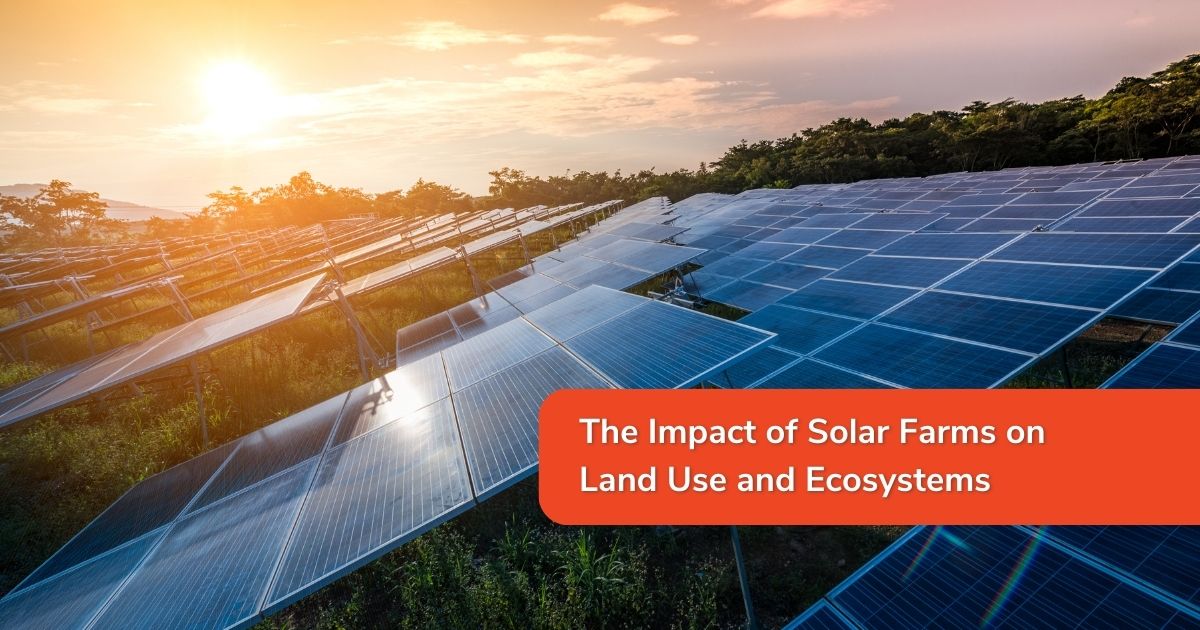The Impact of Solar Farms on Land Use and Ecosystems

As the world pivots towards renewable energy, solar farms in Australia stand at the frontier of the green revolution. With its wide tracts of land and abundant sunshine, Australia is an ideal canvas for these infrastructures that harness the power of the sun. But as the industry grows, so does the scrutiny surrounding its impact on land use and local ecosystems.
This blog post delves into the complexities of solar farm development in Australia, exploring the positive changes it drives, the challenges it poses to the environment, and the innovative solutions being forged to preserve the country’s natural beauty.
Laying the Groundwork: Solar Farm Boom in Australia
Australia's journey towards solar power has been marked by a significant boom in the development of solar farm projects. They exemplify a central tenet of the country's renewable energy transition, and their role is pivotal in combating climate change. This acceleration is underscored by the country's commitment to reducing greenhouse gas emissions, and solar farms play a crucial part in this effort.
Unveiling the Sun's Potential: Benefits of Solar Farms
The benefits of solar farms are multifaceted, transcending mere energy production. These benefits include:
Reduction in Greenhouse Gas Emissions
Solar energy is a clean, renewable source that contributes to a significant reduction in greenhouse gas emissions, pivotal for Australia's efforts to mitigate climate change.
Renewable Energy Generation
Solar farms contribute to Australia's quest for energy independence and diversification, making the nation less reliant on fossil fuels.
Job Creation and Economic Benefits
The solar industry is a burgeoning sector that not only creates jobs but also drives innovation and local investment, particularly in regional areas.
Facing the Horizon: Challenges and Concerns
The rapid expansion of solar farms is not without its challenges. Here, we examine some of the most pressing concerns:
Land Use and Habitat Disruption
The large footprints of solar farms necessitate significant land use, often encroaching on natural habitats. The impacts on local ecosystems can be profound.
Wildlife Impacts
Solar panels can pose hazards to bird and insect populations, and the cleared land can interfere with animal migration routes.
Visual and Aesthetic Considerations
Solar farms alter the local visual landscape, a change that can be significant in areas of natural beauty, impacting tourism and cultural values.
Soil and Water Contamination
During the construction and maintenance of solar farms, the potential for soil erosion and water contamination increases, affecting local environmental health.
Navigating New Terrain: Mitigation Measures
The solar industry is not blind to its impacts, and it is actively pursuing ways to lessen its footprint. Mitigation efforts revolve around several key areas:
Land Management Strategies
Integrating solar farms into traditional land uses or restoring sites post-operation can mitigate land use concerns.
Wildlife Conservation Efforts
The implementation of wildlife corridors and the use of avian-friendly technologies are strategies to reduce impacts on local fauna.
Landscape Design and Aesthetic Integration
Innovative solar farm designs that blend with the landscape and strict guidelines on buffer zones help to preserve the aesthetic of the environment.
Best Practices for Soil and Water Management
Stringent soil erosion control measures and water treatment ensure the longevity and safety of ecosystems near solar sites.
Illuminating Success: Case Studies
Several solar farm projects in Australia serve as beacons of best practices. These demonstrate that it is possible to balance energy production with environmental stewardship.
Conclusion: A Sustainable Horizon
Australia's solar farm industry stands at a crossroads - one promising a sustainable energy future, but with it, challenges in harmonizing with the natural environment. As the nation navigates this path, a commitment to holistic assessment, transparent dialogue, and steadfast action will be necessary to ensure that solar farms are not just a solution for climate change, but a model of sustainable and responsible development.
The story of solar farms in Australia represents a small but significant part of the pressing and essential discussion about our ecological future. By engaging in open dialogue, fostering a spirit of innovation, and taking resolute action, we can illuminate a path that paves the way for a harmonious coexistence between human progress and the preservation of our planet.
%20(1).png?width=265&height=96&name=www.smartenergyanswers.com.auhs-fshubfsSmart%20Energy%20Answers%20Logo%20(HIRES)%20(1).png)

.png?width=514&height=121&name=Tesla%20Powerwall%203%20(new).png)







